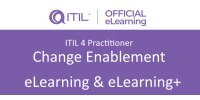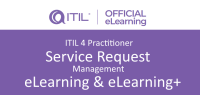In many instances today, organizations can find their product or service is no longer wanted or that something else has replaced it through disruption of the industry, often using digital technology.
Responding to this is probably much harder if you are already number one or two in your market. When former video cassette and DVD rental business, Blockbuster, was number one it faced such a dilemma and lost. Today, a similar threat faces Netflix.
So, if your organization is responding to this challenge by undergoing some sort of digital transformation, the change generally needs to happen while keeping the current business running simultaneously.
Without doing this, you risk destroying your entire business in the change process (unless that was intentional, but more of that later!)
However, other companies not shocked into making a change may be exploring digital transformation to develop, build and gain access to new markets. This is why I think the guidance in ITIL 4 Leader: Digital and IT Strategy resonates with people, by describing various options for parallel operating models during organizational change.
Where to begin with digital transformation?
Before anything changes, somebody in a leadership role has to recognize the need to move in a new direction. That includes having a clear understanding of where you are now and articulating a vision of what the future state needs to be to remain in business and retain market share. And the vision needs to be more detailed than, for example, just “transforming the customer experience”. What about it do you need to transform?
Once you know that, the task is how to change while continuing current operations; also known as changing the tyres on the car while it’s moving.
ITIL 4 Leader: Digital and IT Strategy outlines four possible parallel operating models:
- Cannibalism
- Erosion
- Concurrence
- Synergism
Though most organizations wouldn’t necessarily use the pure form of any one of them, they provide a starting point:
Cannibalism:
This is where you intentionally want to destroy your existing business model and move to a new one because what you do and sell now is no longer viable. One example is the French version of Yellow Pages (Pages Jaune) which completely changed its business model in response to the decline in people using the business directory.
Erosion:
Here, the end goal is to abandon the old business model but within a longer timeline. The current business is still profitable but won’t be forever. Therefore, two models co-exist but the older one will eventually be eroded by the new. The New York Times moving to a digital/subscription model from a successful print-based publication demonstrates this. In a sense, Erosion is a kinder, gentler and slower version of Cannibalism.
Concurrence:
Ultimately, two different business models will co-exist without either supporting or cannibalizing each other. This could be a bricks and mortar clothing business that also starts selling online, increasing its overall market share. It could also be a company that has one geographic location but could sell its products anywhere via e-commerce.
Synergism:
French cosmetics retailer Sephora began selling cosmetics in-store but expanded online with additional customer experience (such as testing make-up virtually). The company wasn’t trying to cannibalize its retail presence but rather continue the in-store experience and sales online and vice-versa. In this way, both operating models support each other.
When considering which approach to follow, ITIL 4 Leader: Digital and IT Strategy provides real-world guidance along with case study examples to make it easier to understand the models.
And it poses the questions:
- What do you want to improve as a business?
- Which operating model would work best?
- How do digital leaders need to lead in these scenarios?
- How do you educate your peers about the options?
- How do you get teams on board and use agile management?
Intentionality is important. This sets you on a reasonable path, although you may not end up in the intended place.
Just waking up one day and deciding to digitally transform your business doesn’t necessarily work. But having the right knowledge and skills to start off with a direction to follow – until you’re proven wrong – is the way to do it.
Source: https://www.axelos.com/resource-hub | Author: David Crouch – Beyond20








